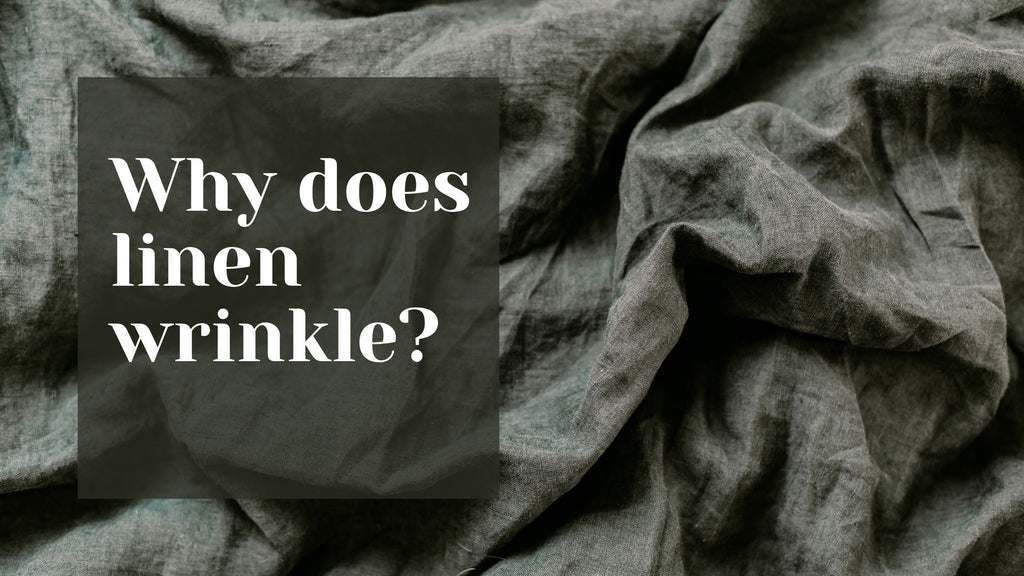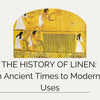Why does linen wrinkle? The answer may surprise you!

Linen has been used in clothing and home goods since biblical times, but it only recently became fashionable again in the 21st century. However, one of the downsides to linen is that it wrinkles easily. This cannot be very pleasant if you like your linens to remain smooth and wrinkle-free! But if you know why linen wrinkles, you'll understand that it's part of its nature, and there are ways to prevent or minimise these wrinkles before they become permanent creases!
Why does linen wrinkle so easily?
Due to the chemical composition of the cellulose in the natural flax fibres, out of which linen is formed, linen is prone to wrinkling. In addition, moisture evaporation leaves chemical bonds in this cellulose, causing creases in the cloth.
To eliminate wrinkles, you must quickly disintegrate these hydrogen connections and replace them with new, non-wrinkling ones. A linen-hybrid fabric, such as a cotton-linen mixture, will be less prone to wrinkles, but you will lose several advantages of pure linen. Pure flax fabric may be more inclined to creasing, but it maintains many other remarkable features.
How to remove wrinkles and creases in linen clothing
Ironing
Before wearing linen clothing, ironing is the most evident and straightforward approach to eliminate creases. After washing your items with a moderate detergent, according to the care guide, iron them while they are still wet to eliminate wrinkles. If the clothing is dry, spray it with water and then roll it gently to spread the moisture evenly. Read more about Tips for ironing linen
Starching
Starch your linen clothing, tablecloths, and bedsheets to eliminate creases and provide a rigid, professional appearance. You may use a variety of spray starches before steaming, or you can have a dry cleaner treat the clothing for you.
Garments that have been starched may become yellow if not laundered after use and after starch treatments. Don't let your beautiful white linen fabric get destroyed! Bleached, yellowed textiles that have been improperly preserved are even less appealing than linens with creases.
Steaming
It is recommended that you use a clothes steamer to pre-steam the linen garments before putting them on. Even if not all the wrinkles are removed, the steam will smooth the fabric and make it more uniform. You should also use the heat option on your iron at a high temperature if your linen can withstand the heat. If you are unsure whether or not your linen can withstand the heat, test it first in an inconspicuous area.

Conclusion
While it's true that linen is more likely to wrinkle than other fabrics, you can do a few things to help prevent wrinkling. First, avoid overloading the washing machine or dryer, which can cause clothes to bunch up and crease. Secondly, remove your linen from the dryer while it's still damp and hang it up immediately. Finally, remember to use a fabric softener in the wash cycle - this will help keep your linen looking smooth and wrinkle-free.
Don't overload your washing machine






